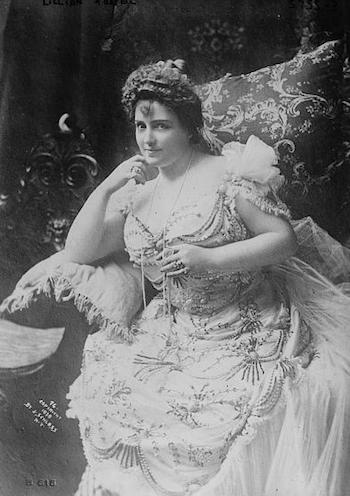America Gets Weight Conscious
In the days of rotund President Taft, curvaceous Lillian Russell represented an ideal figure for women. “There was nothing wraithlike about Lillian Russell,” wrote Clarence Day in the Post, recalling Russell’s popularity. “She was a voluptuous beauty, and there was plenty of her to see. We liked that. Our tastes were not thin or ethereal. We liked flesh in the ’90s. It didn’t have to be bare, and it wasn’t, but it had to be there.”
Excess fat was regarded as a sign of beauty, maturity, prosperity, and even protection against wasting disease like tuberculosis. But in the new century, values were changing. The excerpt below is from an article that would have been many readers’ introduction to dieting.

Fear of Fat
By Margaretta Tuttle
Excerpt from article originally printed July 29, 1916
Twenty years ago, no man of 50 expected to have a waist and no woman of 40 a figure. If you looked pleasant and comfortable that was enough. You could wallow in fat and grow old in peace. … Nobody looked askance at you and said: “Why don’t you reduce?” Fat was fate, and no more to be helped than a crooked nose or big feet. …
These are the days of efficiency. … Fat has gone out with bonnets, and caps with lavender bows, and mufflers round the neck. … The fact is that we are eating more than we need, and working both brain and body less than we should, or we shouldn’t be fat.
You can’t get away from it. You may like to eat better than you do anything else, or you may think you need food ever so often to keep up your strength; but if you are fat you are eating more than you should or you are doing less than you ought, and both of these mean inefficiency. You cure yourself by eating less or doing more, or both; but it’s work and hard work either way.
The concept of healthy eating was so new when Tuttle wrote this article, she had to explain to readers what proteins and carbohydrates were. She also included a sample diet, which would probably not enjoy a doctor’s recommendation today. For more on 20th-century weight-loss, read the full text to Margaretta Tuttle’s “Fear of Fat.”